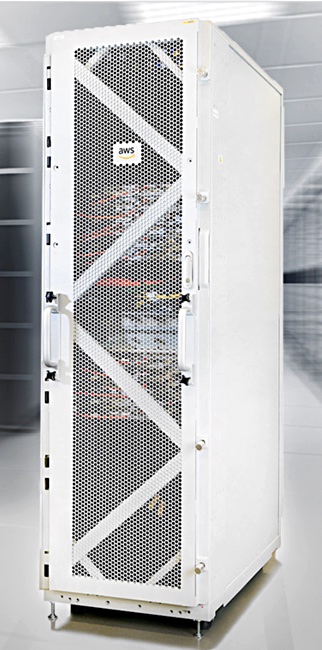Amazon’s AWS Outposts has been updated to allow customers of the cloud-in-a-box to create and operate instances of the RDS relational database service on their own premises.
AWS Outposts enables customers to run a range of AWS services locally. The service launched in December 2019 and comprises a fully managed infrastructure package made up of racks of AWS compute and storage.
As Blocks & Files reported at the time, this tight coupling with the AWS public cloud is a different approach to delivering an on-premises cloud than taken by Dell EMC and other converged infrastructure rack vendors. However, it is similar to offerings such as Oracle’s Cloud@Customer and Microsoft’s Azure Stack, both companies that operate public cloud services but have learned from enterprise customers that there are some workloads they are not prepared to move out of their own data centre.

From today, customers that have deployed AWS Outposts can create and operate RDS DB Instances on the platform, for applications that are latency-sensitive and need to be in close proximity to on-premises assets. Current support only extends to MySQL and PostgreSQL, but Amazon said it will add more database engines in the future.
Announcing the update on the AWS blog, AWS chief evangelist Jeff Barr said customers have access to key RDS features such as scheduled backups to Amazon S3 storage, built-in encryption at rest and in transit. Bu, he counselled, there are some important things to bear in mind.
For instance, a management fee is charged on an hourly basis for each database that is managed. Pricing starts at $0.075 per hour for a MySQL instance with two virtual CPUs and 8 GiB of memory. Full pricing details are published on the RDS on Outposts page.
Customers cannot make use of read replicas or create highly available clusters, but they can make use of point-in-time recovery, scale instances up and down, and automatic minor version upgrades work as expected, according to Barr.
Storage used for RDS DB instances is encrypted with keys under the AWS Key Management Service (KMS), as are DB snapshots. Automated backups are stored in the AWS region and they can be used to create a fresh DB Instance in the cloud or in a customer’s Outposts. Manual snapshots are also stored in the AWS region, and can be used to create a fresh DB Instance on the same Outpost.







